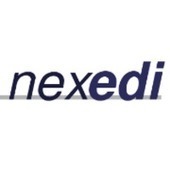 Your new post is loading...
 Your new post is loading...
Communiqué de presse Paris, le 16 juin 2017. Nexedi offre à l'Etat de couvrir la France en très haut débit en moins de 12 mois pour 200 millions d'euros et sur la base de technologies exclusivement françaises dont l'ensemble du code source est libre ou souverain. Comme le rapporte Numerama, un rapport de la Cour des comptes consacré au plan « France Très Haut Débit » a jugé très sévèrement la stratégie actuelle. Il considère notamment que les évaluations faites par le gouvernement Hollande pour raccorder la totalité des Français ne sont absolument pas réalistes. Ce n’est pas 20 milliards d’euros que le plan coûtera à la nation mais 34,9 milliards, soit 75 % de plus. Le Président de la République considère que le plan Très Haut Débit actuel n'est pas réaliste en l'état. Si on veut raccorder tout le pays d'ici 2022, il faut réduire le rôle de la fibre optique et mettre davantage l'accent sur d'autres solutions, comme la 4G. Pour raccorder tout le territoire en fibre, à supposer que cela en vaille la peine, « il faudra des années, parfois des décennies », a-t-il prophétisé. Et comme le rapporte Nextinpact, le président de la République a déclaré qu'« il ne faut pas mentir aux gens ». La fibre ne sera pas rapidement déployée « jusqu'au dernier kilomètre, dans le dernier hameau », du moins pas avant des décennies. Nexedi souscrit à cette analyse et propose de la mettre en pratique sous 12 mois avec du matériel et du logiciel "Made in France". Ce matériel déjà déployé par l'armée française et la SNCF permet d'obtenir un résultat meilleur pour un coût dix fois inférieur aux solutions d'infrastructure "Made in China" généralement utilisées par les opérateurs. Il repose sur les produits d'un consortium de sociétés françaises (Air-Lynx, Amarisoft, AW2S, BJT Partners, Horizon Computing et Nexedi) qui constitue l'unique constructeur français d'infrastructures LTE (4G/future 5G) suite au rachat d'Alcatel et qui fait déjà l'objet d'un soutien de BPI France dans le cadre de son programme "Grands Défis du Numérique". L'offre de Nexedi permet de réaliser un réseau 4G autonome à 300 Mbps ou 1 Gbps pour un investissement de 5000€ par site ou village et un coût récurrent annuel de moins de 500€ par site ou village. L'enveloppe de 200 M€ permet de couvrir de l'ordre de 20.000 sites et de les relier par une combinaison de liaisons radio ou satellitaires aux grandes infrastructures fibrées déjà en place ou à venir, tout en fournissant à l'armée une solution de communication résiliente (PMR). Nexedi a démontré depuis 10 ans sa capacité à réaliser des infrastructures fiables à bas coût dans des domaines où les grands opérateurs nationaux échouent. Ainsi, Cloudwatt et Numergy ont bénéficié d'aides publiques considérables sans parvenir pour autant à livrer un cloud souverain compétitif. Au contraire, Nexedi a développé pour un coût 100 fois inférieur le logiciel de Edge Cloud "SlapOS" qui est désormais au coeur du succès du projet Teralab (hébergement Big Data souverain utilisé par de nombreux acteurs du CAC40). L'absence de couverture des zones blanches conduit à positionner la France entre l'Iran et le Kazakhstan en termes de pénétration de la 4G. L'absence de progrès dans le domaine du haut débit depuis 15 ans relève de blocages comportementaux des grands opérateurs qui préfèrent les infrastructures "Made in China" aux solutions sur base Amarisoft pour la couverture LTE, comme ils préfèrent pour leur business cloud les solutions "Made in China" à SlapOS, quitte à dépenser 10 à 100 fois plus qu'avec des technologies souveraines issues de PME françaises et déjà exportées. L'offre de Nexedi est valable jusqu'au 14 juillet 2017.
Alcatel-Lucent's research arm, Bell Labs, has announced that ongoing testing of its prototype real-time space-division multiplexed optical multiple-input-multiple-output (MIMO-SDM) system could see the company attain speeds of 1 petabit per second in time for the arrival of 5G and the Internet of Things. In what the company called a "major breakthrough", a trial of the 6x6 real-time MIMO transmission technology in New Jersey saw Bell Labs successfully remove for the first time crosstalk from multiple signals on the fibre supporting the six parallel optical signal paths using real-time processing. "This experiment represents a major breakthrough in the development of future optical transport," Marcus Weldon, CTO of Alcatel-Lucent and president of Bell Labs, said. "We are at the crossroads of a huge change in communications networks, with the advent of 5G wireless and cloud networking under way. Operators and enterprises alike will see their networks challenged by massive increases in traffic. At Bell Labs, we are continuously innovating to shape the future of communications networks to meet those demands." The successful experiment used six transmitters and six receivers alongside real-time digital signal processing over coupled fibre stretching 60km in Bell Labs' global headquarters.
C'est ce qu'un abonné a d'abord signalé sur Twitter, et ce que nous a ensuite confirmé un porte-parole de l'opérateur. « De plus en plus » d'abonnés à l'offre haut de gamme Livebox Jet Fibre passent ainsi de 500 Mb/s à 1 Gb/s, « automatiquement et progressivement ». Si la totalité des foyers éligibles à la fibre d'Orange sont éligibles aux 500 Mb/s, tous ne peuvent pas bénéficier de 1 Gb/s : « Ni plus, ni moins que chez les autres opérateurs ». Et contrairement aux box de Free et à certaines de SFR, la Livebox Fibre permet bel et bien de profiter d'un débit brut de 1 Gb/s. Les premiers tests montrent effectivement un débit utile d'un peu plus de 910 Mb/s, une partie de la bande passante étant utilisée pour le fonctionnement du réseau, ce qui est normal. La Freebox quant à elle — à moins d'utiliser le mode bridge et de renoncer aux fonctions routeur et Freebox OS — n'est pas capable de router les paquets à plus de 400 Mb/s. Chez SFR la NB6, qui équipe une partie des clients fibre, limite le débit à 850 Mb/s. La NB6v pour sa part est la plus rapide puisqu'elle atteint 950 Mb/s (on suppose que l'encapsulation utilisée par SFR est un peu moins gourmande que celle utilisé par Orange).
U.S. broadband giant AT&T could roll out 1Gbps fiber-optic service to up to 21 new metropolitan areas, including Atlanta, Chicago, Los Angeles, San Francisco and San Jose, California, the company said Monday. The company's rollout of its U-verse broadband with GigaPower service will also include television service. AT&T had previously announced plans to build ultra-fast broadband in Austin and Dallas in Texas and in Raleigh-Durham and Winston-Salem, North Carolina. The company will work with local leaders and groups to discuss ways to bring the ultra-fast broadband service to communities, the company said in a press release. Communities that have suitable network facilities, and show the strongest investment deals, based on anticipated demand and the most receptive policies, will influence the company's selections, AT&T said.
Alcatel-Lucent's Bell Labs has found a way to go that extreme distance by relying on the basic concept behind noise-cancelling headphones. When the researchers send data across two light beams in opposing phases, they can superimpose the signals and neutralize the distortion that would normally occur at long ranges. Such clean output lets Bell Labs ramp up the signal strength and maintain high speeds across whole oceans: its test pushed 400Gbps through 7,954 miles of fiber.
"The computer is responsive in a manner that I've never experienced before."
The link between Paris and Lyon is the first operational deployment of long-distance 400 Gbps wavelength fiber connectivity, with its first tester being France’s educational and research network, Renater.
|
It’s been almost three years since former FCC Chairman Julius Genachowski set a goal of having at least one gigabit network in every state by 2015. The year is now over and by Telecompetitor’s tally, we didn’t quite make it – but we’re close. We combed through our archives and other online resources and, by our tally, at least one network operator has announced plans to offer gigabit service in every state. Not all of these networks are actually deployed or supporting service yet. But generally network operators don’t announce specific markets more than a year or two in advance of when they expect to deliver service. If, for example, a network operator simply said it would eventually upgrade its entire footprint beginning in 2016, as Cox Communications did, we didn’t count the company’s entire footprint, only the states it provided more details on. We also didn’t count a deployment unless plans included residential users. Clearly Genachowski wasn’t talking about gigabit Ethernet service to commercial buildings when he set the gigabit goal. Gigabit States Even heavily rural states – states such as Wyoming, West Virginia, or Maine – made the list, thanks to a wide range of small locally-focused telcos, utilities, municipal network operators, and others. Even though deployment costs tend to be higher in rural areas, entities with a local focus often manage to find a way to make gigabit happen – and in the telco arena, many companies already had fiber-to-the-home networks, making it relatively easy to upgrade to a gigabit. Another thing that helped put all 50 states on the gigabit map was that tier one or tier two telco and cable operators that had not previously announced gigabit plans decided to get in on the trend. On the cable side, Comcast in 2015 launched an FTTH-based 2 gigabit service dubbed Gigabit Pro in several states – albeit in limited parts of each market. Smaller cablecos such as Cable One, Suddenlink, Mediacom and Troy Cable also made gigabit plans. And we’re likely to see a lot more from the cable companies in 2016 as they begin to deploy DOCSIS 3.1, which supports gigabit speeds.
Last December customers were peppering wireless LAN vendors with questions about whether to upgrade to the pre-standard-but-certified 802.11ac products flooding the market or hold off until 2015, when more powerful “Wave 2” Gigabit Wifi gear was expected to become prevalent. A year later, even though Wave 2 products have begun trickling into the market, many IT shops seem less preoccupied with Wave 2 and more focused on installing the Wave 1 11ac routers, access points and other products at hand
Called the Lunar Laser Communication Demonstration (LLCD) and constructed by a joint team of NASA and MIT engineers, the set-up consists of four laser transmitters at a ground terminal in New Mexico, which send coded infrared light pulses though four different telescopes and up to a lunar satellite384,633 kilometers out into the depths of space. As a result, we now have a data uplink with the Moon that reaches up to 19.44 Mbps. If you live in the United States, that’s about two and a half times more powerful than your standard 7.4 Mbps.
SFR lance la Fibre à 300 Mbit/s et démarre un pilote à 1 Gbit/sLa Fibre de SFR passe à 300 Mbit/s et devient la plus rapide du marchéSuite aux expérimentations menées en 2011 et 2012, SFR organise un pilote grandeur nature à 1 Gbit/sLa Fibre à 300...
If Google is allowed to go after specific neighborhoods and homes in Austin, Texas, AT&T says it should be able to snag the same terms and conditions for its own fiber-optic deployment. "I think you are going to see that begin to manifest itself around the United States, and in not just AT&T and Google. You will see others doing this because the demand for really high-speed broadband via gigabit-type fiber-based solutions on a targeted basis is going to be very, very high," Stephenson said.
Verizon and NEC said they have successfully sent the highest-capacity transmissions for regional and long-haul distances over field fiber. The two companies said tests showed that by expanding from one band to two bands, the C-band and the L-band, the two firms were able to transmit 40.5 terabits per second for a long-haul distance of more than 1,800 kilometers (1,118 miles) and 54.2 Tb/s over a regional distance of more than 630 kilometers (391 miles), using Verizon’s fiber loop outside Dallas. The achievement was accomplished by tightly packing optical channels in the two bands of the optical fiber spectrum, the two firms added.
"There should be at least one community per state with 1Gbps Internet, to drive innovation, Genachowski said..." Cities around the U.S. will have gigabit-speed Internet access by 2015 if the FCC's wishes come true. All 50 states should have at least one community where consumers can get 1Gbps or faster Internet access by 2015, U.S. Federal Communications Commission Chairman Julius Genachowski said on Friday. Speaking at the U.S. Conference of Mayors Winter Meeting in Washington, D.C., he called the new push for fast networks the Gigabit City Challenge. Gigabit-speed Internet access stimulates technology innovation and associated economic growth, Genachowski said. "The U.S. needs a critical mass of gigabit communities nationwide so that innovators can develop next-generation applications and services that will drive economic growth and global competitiveness," Genachowski said, according to an FCC press release. He cited Google's new network in Kansas City and a fiber network built by a local utility in Chattanooga, Tennessee, where he said Amazon.com and other companies have created more than 3,700 new jobs over the past three years.
|



 Your new post is loading...
Your new post is loading...



















Une approche radicale, non-conventionnelle, très "deep tech" de la couverture Très Haut Débit et utilisant des solutions 100% françaises, à mon avis cela se regarde et se teste !